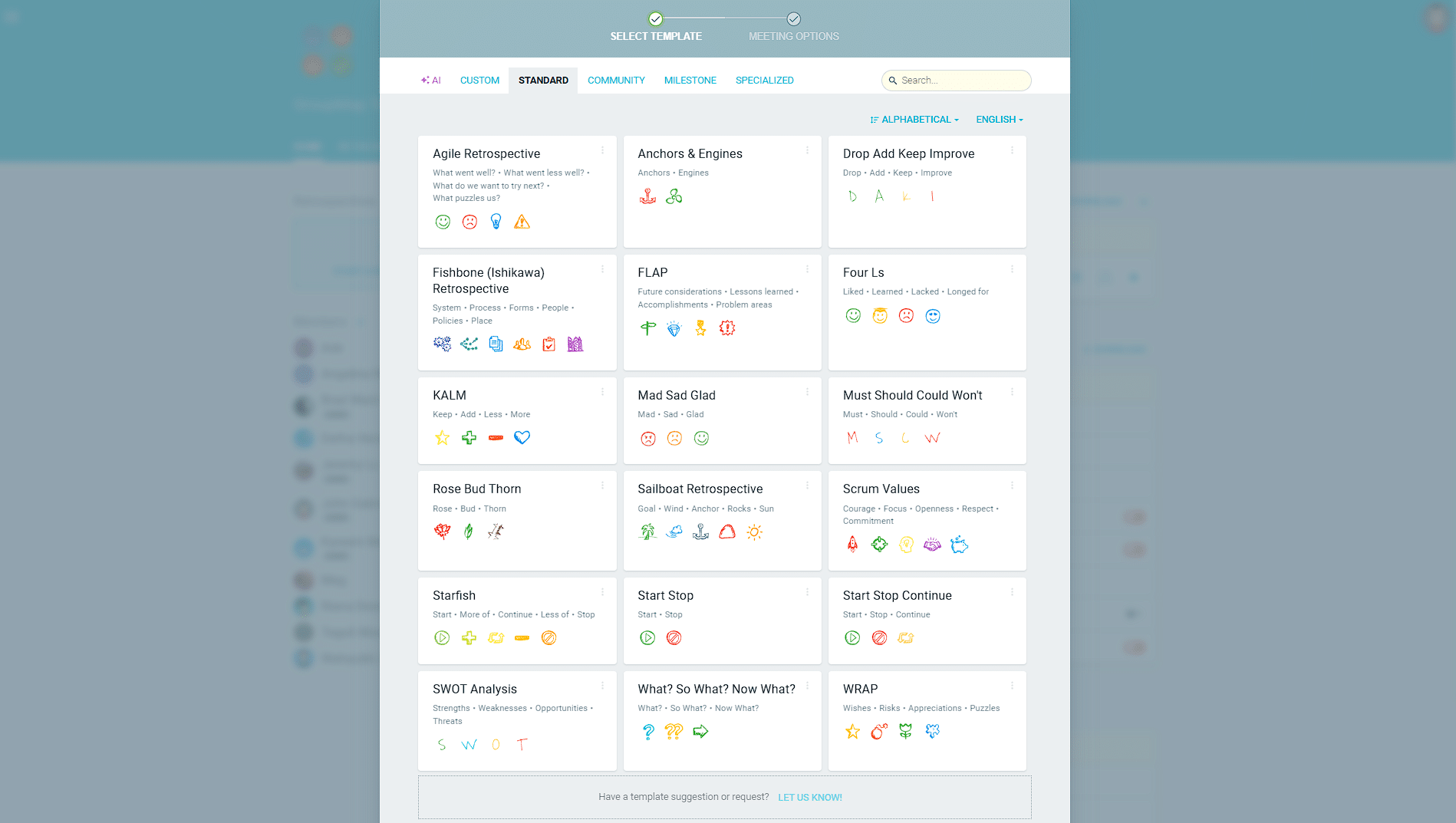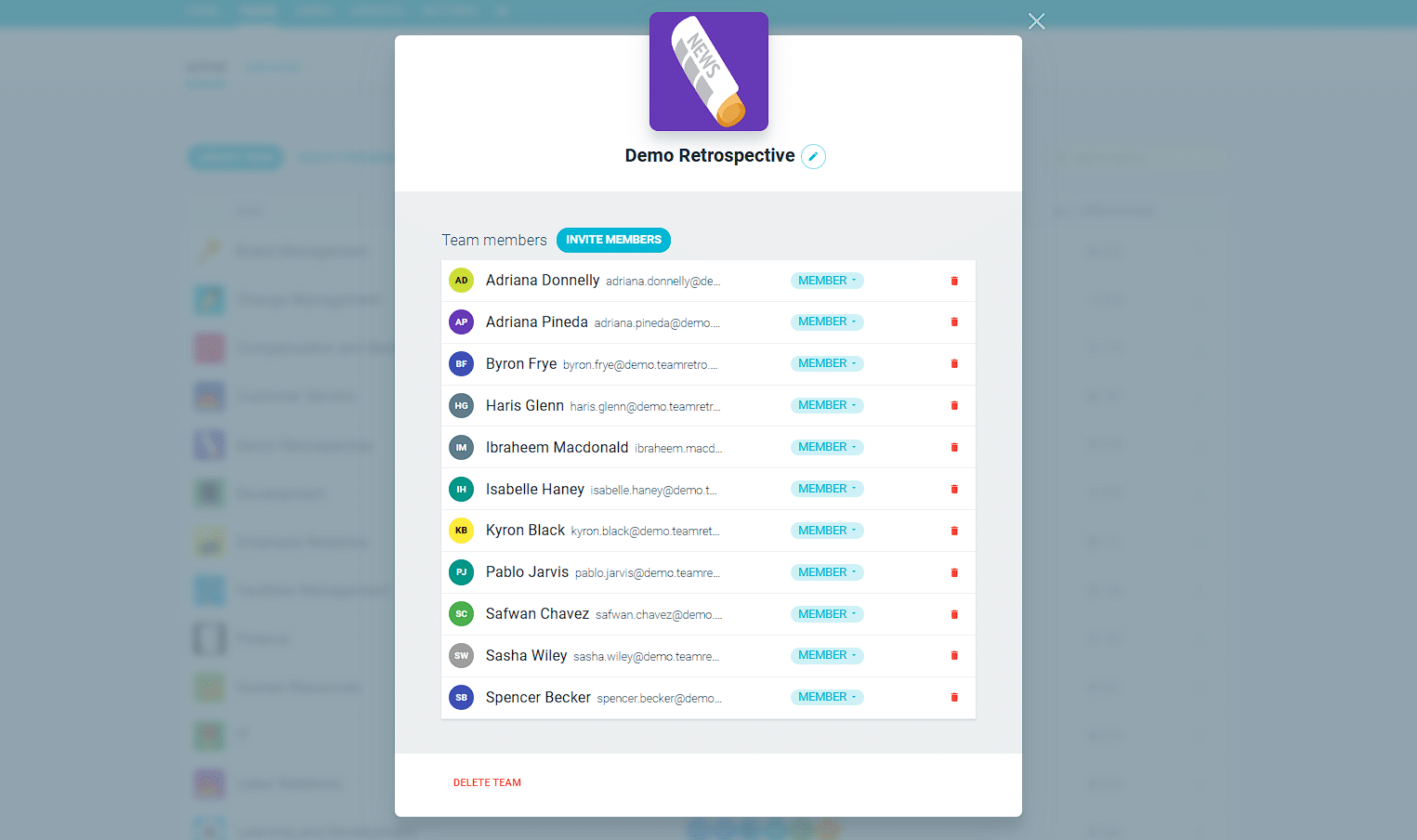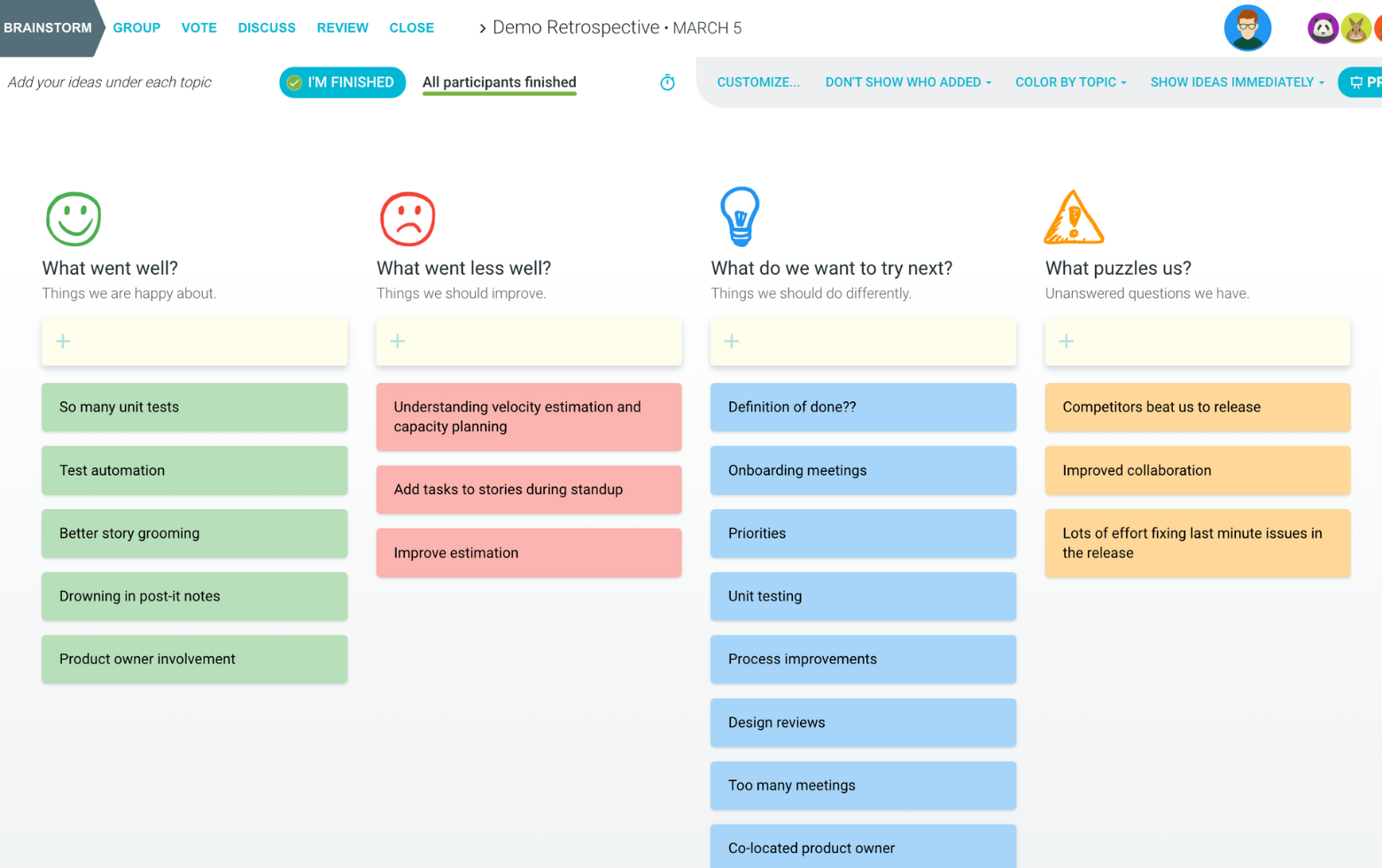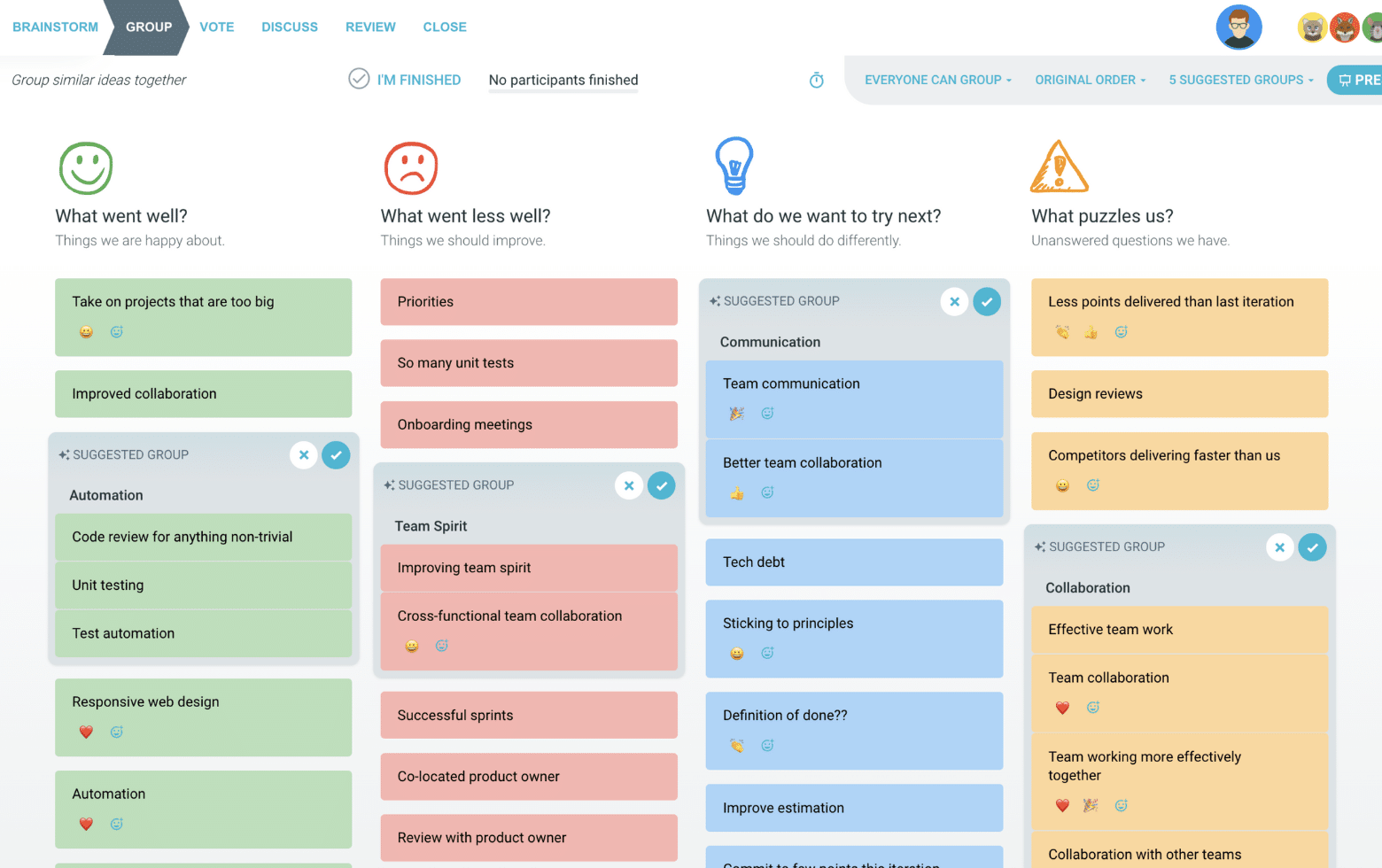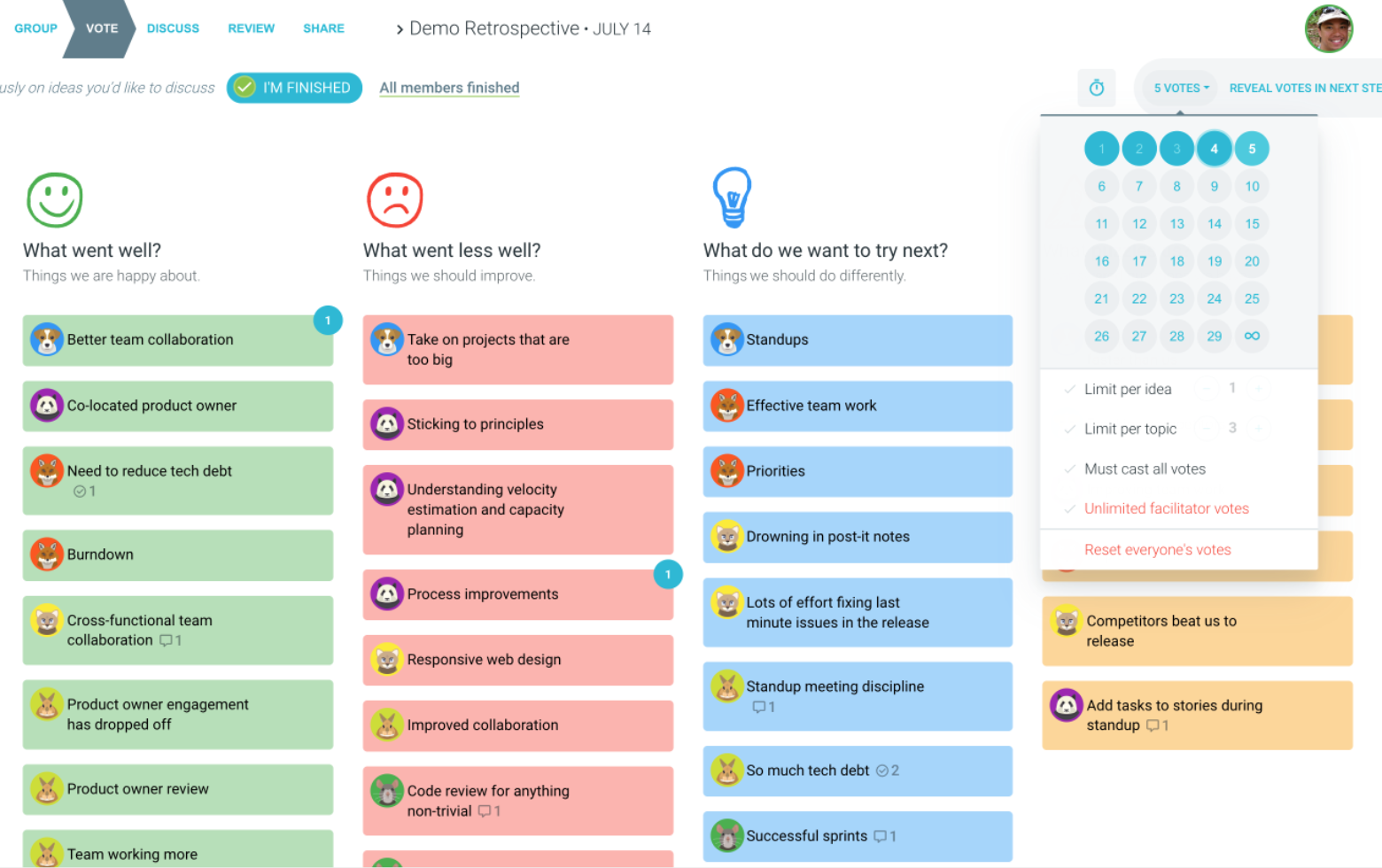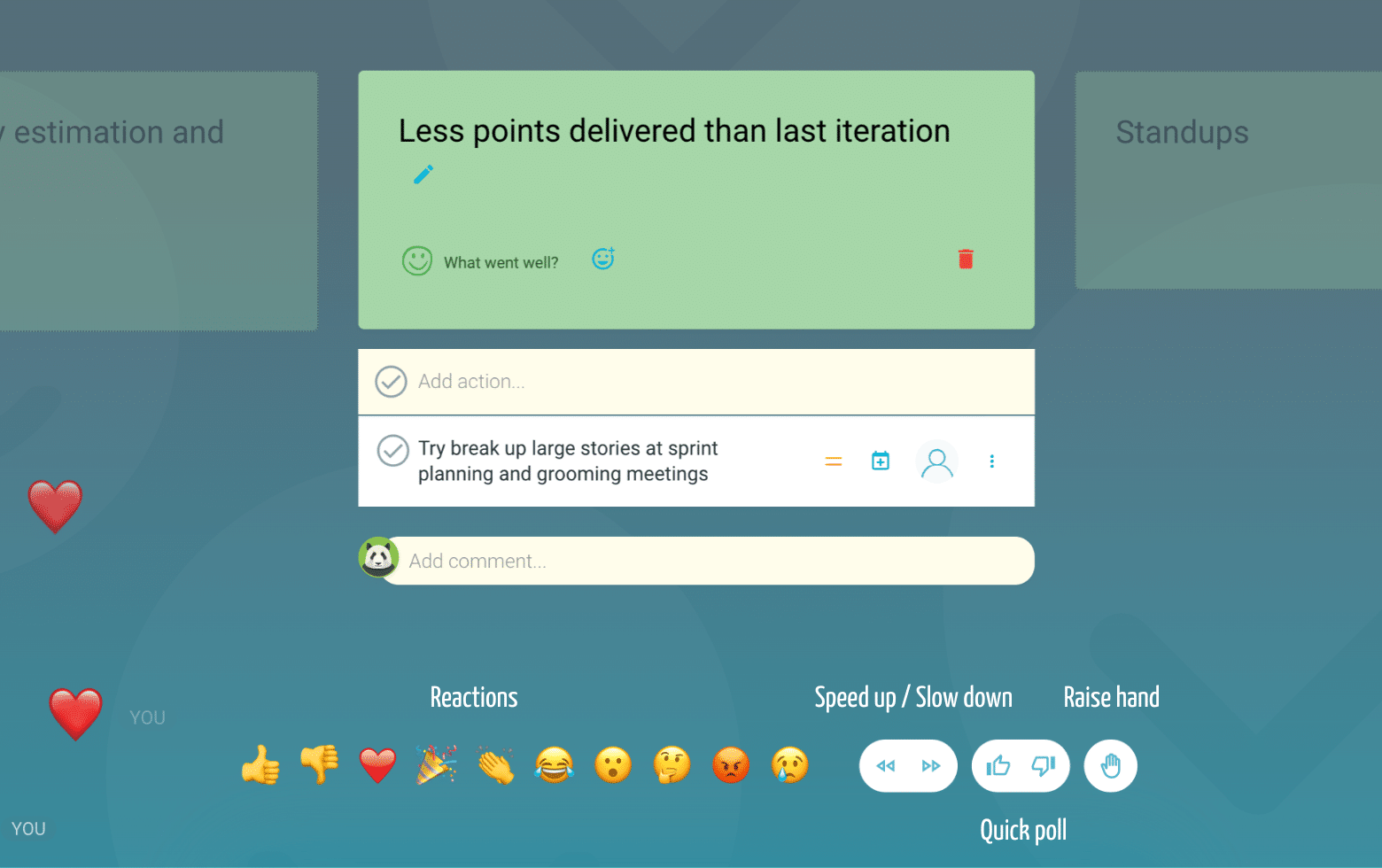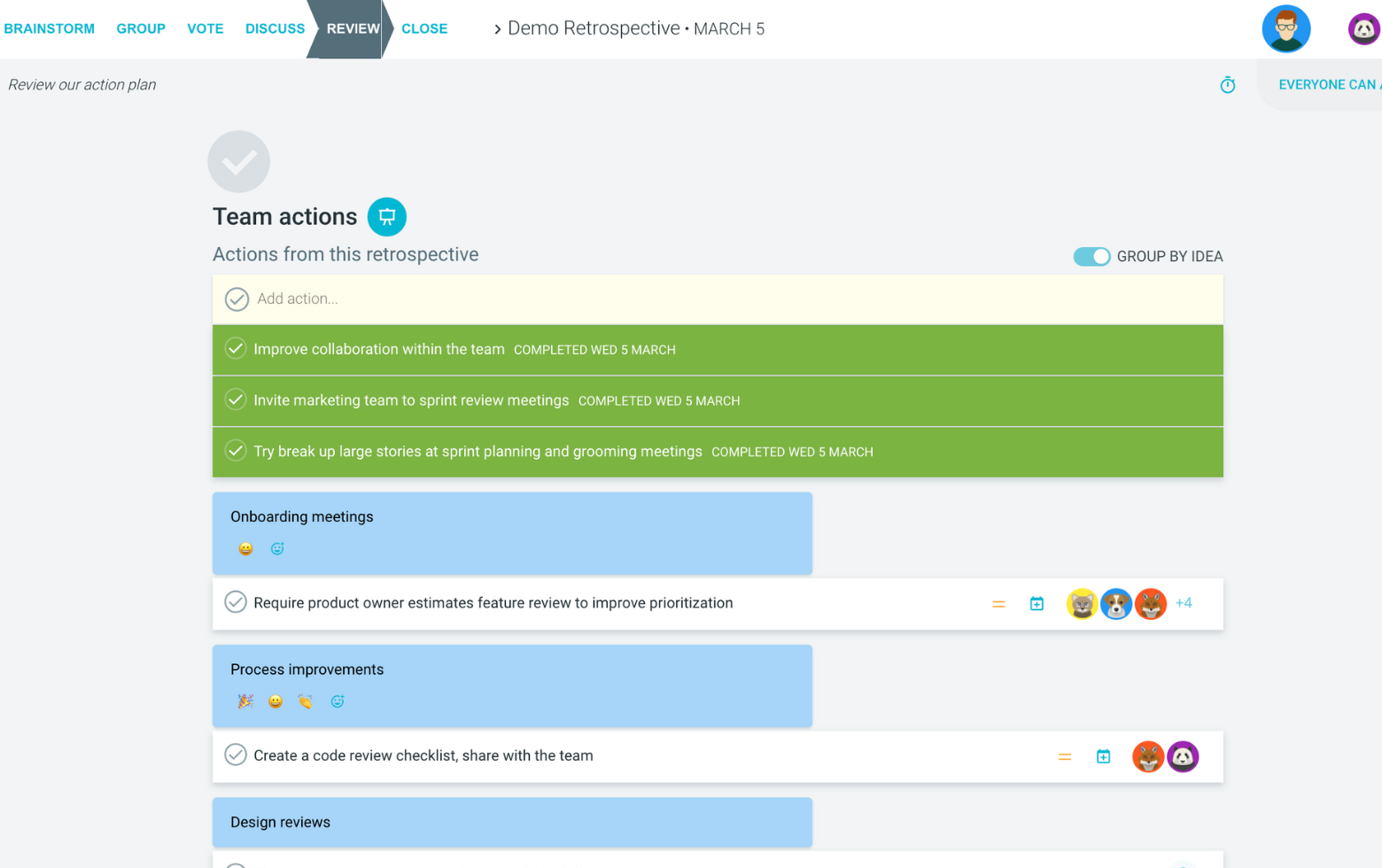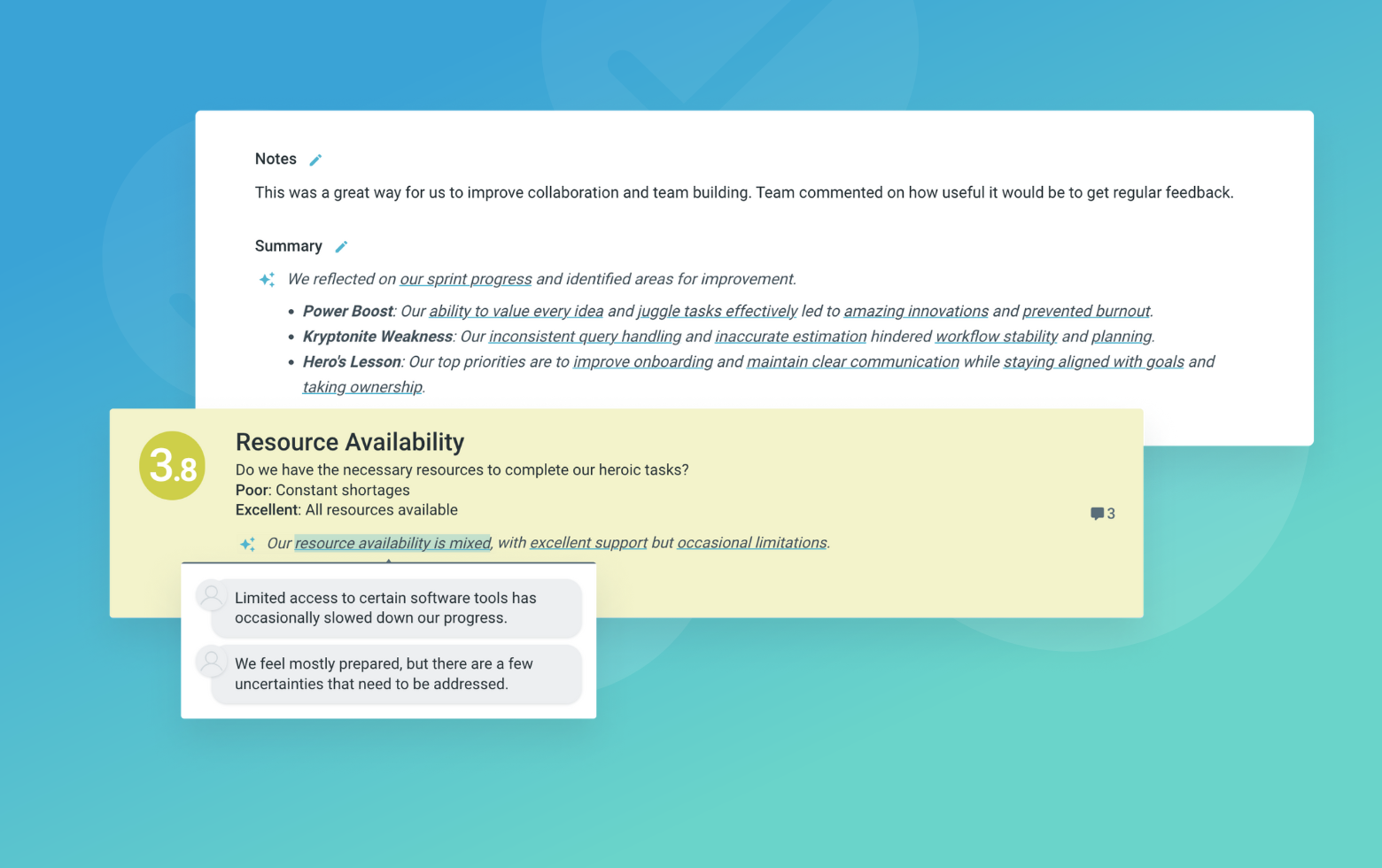The agile retrospective technique asks 4 basic questions that gets the team thinking about the outcomes of the last sprint, and what actions they should focus on next.
While it is straightforward, it sends the basic message that you are listening and geared for improvement. Based on the book by Esther Derby, Diana Larsen and Ken Schwaber, this tried and true method acts as an engine tune-up that keeps your team working at peak performance.
Held regularly, it uncovers issues with the software development life cycle and gives your team a way to solve it together.
Rather than running a post mortem, regular agile retrospectives that are short, sharp and documented means that you can quickly make changes before it’s too late. Much like steering a big ship, it’s a lot easier to make small changes en route to the destination, than finding out at the end you have docked in the wrong port. Unlike debriefs or post mortems is it is intended to have a more positive and proactive focus.
What is The Agile Retrospective
What went well?
Things we are happy about.
Encourage the team to share specific examples of successes, big or small. Celebrate team accomplishments and individual contributions.
What went less well?
Things we should improve.
Create a blame-free environment for open and honest discussion. Focus on processes, not individuals. Look for root causes.
What do we want to try next?
Things we should do differently.
Encourage creative thinking and be open to unconventional ideas. Look for small, practical experiments to run in the next sprint.
What puzzles us?
Unanswered questions we have.
This is a chance to surface unknowns or areas needing further investigation. Capture these for future discussion.
Suggested icebreaker questions
- If you could add one tool or process to help our team, what would it be?
- What's one small thing that could have a big positive impact on our team?
Ideas and tips for your retrospective meeting
- Set a positive tone and create a blame-free environment for open discussion.
- Timebox each section to keep the retrospective focused and productive.
- Encourage participation from all team members, not just the vocal few.
- Capture action items and make someone accountable for following up.
- Don't try to solve every issue - prioritize and experiment incrementally.
- Consider having a rotating facilitator role to get fresh perspectives.
.
How to run effective meetings with TeamRetro
Start Your Session in a Click
Log into TeamRetro and choose your template. Customise questions and the workflow to create your perfect retro for your team.
Create Your Team Easily – No Separate Accounts Needed
Brainstorm Individually – Free From Bias
Smart Grouping for Faster Insights
Fair, Flexible, and Fast Voting
Engage, React, and Capture Key Insights
Walk your team through ideas one by one with Presentation Mode. Stay in sync, spark real-time discussions, and capture feedback with comments, live reactions, and polls—all in one place.
Turn Ideas Into Action
Propose next steps with team buy-in, get AI-powered action suggestions, and keep everything in one place. Committed actions sync to your personal dashboard and integrate with your workflow tools—keeping you on track.
Save, Share, and Stay on Track
Get quick AI-powered summaries, add facilitator notes, and store retrospectives in your library for easy access. Schedule your next session and track published actions to keep your team accountable at the next retro.
Turn Team Data into Actionable Insights
Uncover trends, common themes, and key engagement metrics at a glance. Track sentiment shifts, analyze conversations, and monitor completed actions to drive continuous improvement.
